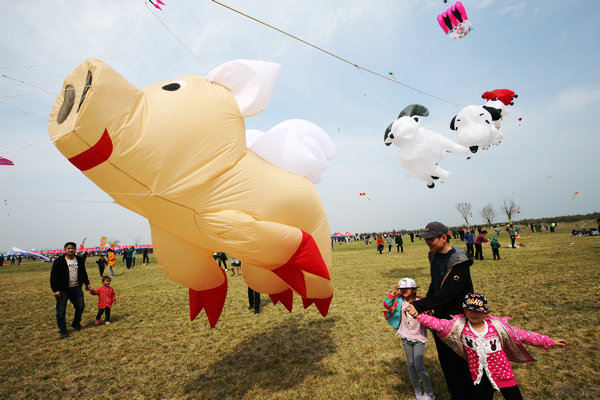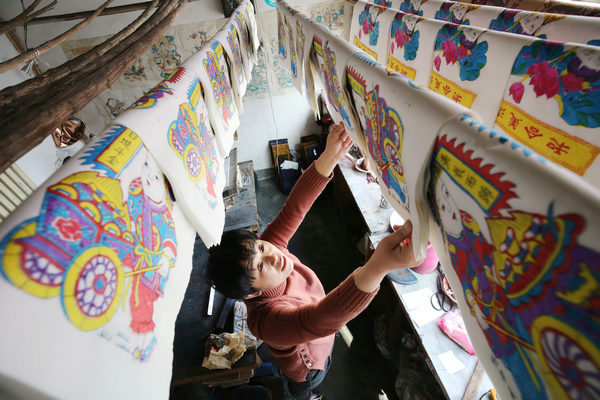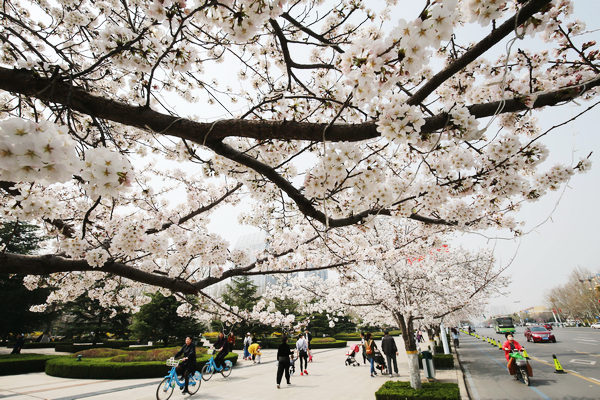'Kite city' flies higher with cultural heritage
By Li Hongrui| (chinadaily.com.cn)| Updated : 2018-07-09
Print Print
From
the 35th Weifang International Kites Festival, April 21, 2018.
[Photo/Xinhua]
When Mo Di, a philosopher,
invented the wood kite about 2,000 years ago, he would have never thought his
invention would be passed down and eventually grace Weifang in Shandong
province.
Known as the cradle of kites, Weifang is also home to many household names, from scholars to poets to artists.

A craftswoman prepares New Year pictures in
Weifang, Shandong province, Jan 29, 2018. [Photo/Xinhua]
Called the "city of handicraft", Weifang
earned fame for its highly developed craft work during the Qing Dynasty
(1644-1911). Zheng Banqiao, the official calligrapher and painter for the
Qianlong Emperor, once worked in Weifang as the county magistrate. He praised
Weifang as "another Suzhou" in his poem, as Suzhou was one of the most developed
places in his time.
With a rich cultural heritage and natural beauty, the city received more protection in modern China. In 2010, an eco-cultural protection area was established in Weifang, the ninth such national area administered by the Ministry of Culture and Tourism.

Cherry blossom in Weifang in Shandong province, March 28, 2018.
[Photo/Xinhua]
In the past decade, the city
has been dedicated to becoming a culture-rich city, as it is developing
specifically based on cultural creativity. Taking kites as a trademark, Weifang
has also established a public cultural service system, bringing more benefits to
its people. As one example for the eco-cultural protection area, intangible
cultural heritages are being protected in new, creative ways.
The achievements of Weifang in the field of culture protection will go on show in Prince Kung's Mansion in Beijing from July 23 to Aug 23.
